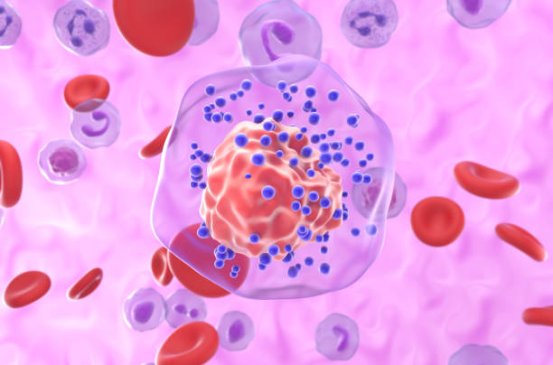Triple-negative breast cancer (TNBC) is an aggressive type, accounting for about 10–15% of all breast cancer cases, and lacks estrogen, progesterone, and HER2 receptors, making it resistant to standard targeted therapies.

Causes and Risk Factors
Several factors may increase the likelihood of developing TNBC:
-
Genetics: Mutations in the BRCA1 gene significantly raise risk.
-
Sedentary Lifestyle: Limited physical activity can contribute to breast cancer development.
-
Late Pregnancy: Women having their first child after age 30 face higher TNBC risk.
-
Hormone Therapy: Prolonged use of hormone replacement therapy (HRT) may elevate risk.
-
Vitamin D Deficiency: Low vitamin D levels have been associated with increased breast cancer susceptibility.
Recognizing Symptoms
TNBC symptoms often resemble other breast cancers and may include:
-
Noticeable changes in breast size, shape, or contour
-
Persistent pain or swelling in one breast
-
Lumps in the breast or underarm area
-
Nipple changes, including discharge, inversion, or scaling
Any unusual breast changes should be evaluated promptly by a healthcare professional.
Stages of TNBC
TNBC progresses through the following stages:
-
Stage 0: Abnormal cells remain confined to their origin.
-
Stage 1: Cancer is localized to the breast or nearby lymph nodes.
-
Stage 2: Disease extends to additional lymph nodes.
-
Stage 3: Cancer spreads to nearby tissues but not distant organs.
-
Stage 4: Cancer metastasizes to distant areas such as the lungs, liver, or bones.
Treatment Options
Management typically involves a combination of therapies:
-
Surgery: Lumpectomy or mastectomy to remove the tumor or breast.
-
Chemotherapy: Neoadjuvant (before surgery) to shrink tumors or adjuvant (after surgery) to eliminate residual cells.
-
Radiation Therapy: Targets any remaining cancer cells post-surgery.
Common Side Effects
Treatments can cause temporary side effects such as:
-
Nausea and vomiting, especially during chemotherapy
-
Fatigue from both treatment and recovery
-
Skin irritation, including redness or tenderness
-
Lymphedema caused by lymph node removal or damage
Lifestyle and Nutrition for Recovery
Supporting treatment with healthy habits may improve outcomes:
-
Eat foods rich in phytochemicals (e.g., turmeric, broccoli, soy) to combat inflammation
-
Exercise regularly to maintain energy and immunity
-
Limit processed foods and salt for overall health
-
Consider supplements under medical guidance to address deficiencies
Prognosis and Outlook
Early-stage TNBC has a five-year survival rate of around 91%. Due to higher recurrence risk in the first few years, consistent follow-up is crucial. Advances in immunotherapy and targeted treatments are improving long-term outcomes and offering new hope.
Final Thoughts
While TNBC presents unique challenges, early detection and comprehensive care make it treatable. Combining medical treatment with a healthy lifestyle and regular screenings can improve survival and quality of life. Awareness of risk factors, symptoms, and treatment options empowers individuals to take proactive steps toward breast health and recovery.
